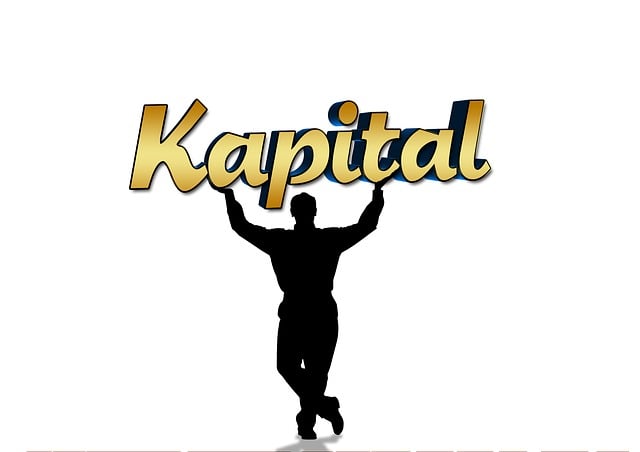Debt restructuring and debt review are two distinct strategies for managing overwhelming debts, each catering to unique financial needs. Restructuring involves renegotiating debt terms for long-term relief, while review focuses on analyzing financial situations within existing obligations to optimize budgeting and credit utilization without changing terms. Debt review is a crucial first step, providing a comprehensive understanding of monetary commitments and enabling informed decisions; whereas restructuring requires significant changes and may involve collateral. Both aim to help individuals effectively manage debts, with review acting as a guiding light before implementing intensive restructuring measures.
Debt can be a overwhelming burden, but understanding your options is crucial for financial freedom. This article delves into Debt Restructuring vs. Debt Review, two strategies with distinct approaches to managing debt. We’ll explore the definitions, processes, benefits, and drawbacks of each, compare their key differences, and provide guidance on choosing the best option based on your financial situation. Whether you’re considering a fresh start or simply need a strategic reprioritization, understanding debt restructuring vs. debt review is essential for making an informed decision.
- Understanding Debt Restructuring
- – Definition and process explained
- – Benefits and drawbacks discussed
- Unraveling Debt Review
Understanding Debt Restructuring

Debt restructuring is a strategic process where individuals or businesses reorganize their existing debt obligations to improve overall financial health and sustainability. It involves renegotiating terms with creditors, often leading to changes in interest rates, repayment periods, and even the types of debts owed. This option is particularly appealing when facing overwhelming debt burdens that cannot be managed under current conditions. By restructuring, one can achieve more favorable terms, making it easier to stay on top of payments without causing further financial strain.
When considering Debt Restructuring Vs Debt Review, understanding the nuances between the two is key. While a debt review typically involves assessing your financial situation and exploring options within your current debt structure, debt restructuring takes a more aggressive approach by fundamentally altering the terms of your debts. It’s a powerful tool for those ready to make significant changes to their financial obligations, offering relief from debt in the long term.
– Definition and process explained

Debt restructuring and debt review are two distinct strategies for managing financial obligations, each with its own approach and benefits. Debt restructuring involves a comprehensive overhaul of an individual’s or business’s debt portfolio. This process often entails renegotiating terms with creditors, including changes in interest rates, repayment periods, or even the principal amount owed. The goal is to create a new, more manageable debt structure that aligns with the borrower’s capacity to repay. Restructuring can be achieved through various methods like debt consolidation, where multiple debts are combined into one with potentially lower interest rates, or debt settlement, which involves negotiating a reduced total amount to pay off all debts.
On the other hand, debt review is a more analytical and evaluative process. It focuses on examining an individual’s financial situation, expenses, and income to understand the root causes of their debt burden. Creditors or financial advisors carefully assess each debt, considering factors like interest rates, minimum payments, and potential penalties. The review aims to identify areas where the borrower might be overpaying or mismanaging their finances, leading to tailored recommendations for better budgeting, credit utilization, or even debt elimination strategies. This approach empowers borrowers to make informed decisions about their debt management without necessarily changing the terms of their existing debts.
– Benefits and drawbacks discussed

When considering debt management strategies, understanding the nuances between debt restructuring and debt review is crucial. Both options offer unique benefits and come with specific drawbacks, making them suitable for different financial scenarios.
Debt restructuring involves rewriting the terms of your existing debts into a new agreement, often leading to lower interest rates, extended repayment periods, or both. This approach provides relief by simplifying repayments, reducing monthly burdens, and potentially saving on interest over time. However, it may involve giving up assets as collateral, carries long-term financial commitments, and can impact credit scores during the restructuring process. In contrast, debt review focuses on evaluating your current debt obligations, identifying areas of improvement, and negotiating with creditors for more favorable terms. It’s a less drastic measure that preserves creditworthiness, allows for flexibility in repayment strategies, and doesn’t always require collateral. Yet, it might not lower interest rates as aggressively as restructuring and may only offer temporary relief unless combined with robust budget management practices.
Unraveling Debt Review

Debt review is a crucial step in understanding your financial situation and deciding on the best course of action, especially when compared to debt restructuring. It involves a thorough analysis of your debts, expenses, and income to assess your overall financial health. This process helps individuals make informed decisions by providing a clear picture of their monetary obligations. By examining each debt’s terms, interest rates, and repayment options, those undergoing a debt review can identify areas where adjustments might be beneficial.
In the comparison between debt restructuring and debt review, the former is a more intensive strategy. Debt restructuring entails making significant changes to your existing debts, such as modifying interest rates, extending repayment periods, or even consolidating multiple debts into one. In contrast, debt review is a preliminary step that enables individuals to evaluate their options before implementing any major changes. It serves as a guiding light, helping folks navigate the intricate world of Debt Restructuring Vs Debt Review and make choices tailored to their unique financial narratives.
When deciding between debt restructuring and debt review, understanding your financial goals and current situation is key. While debt restructuring offers a fresh start by modifying repayment terms, it may not always be suitable for every borrower. On the other hand, debt review provides an opportunity to assess and negotiate with creditors, potentially leading to more manageable payment plans. Both options have their merits, but choosing the right path depends on individual circumstances. By carefully evaluating the benefits and drawbacks of each, individuals can make informed decisions to navigate their debt in the most effective manner.







